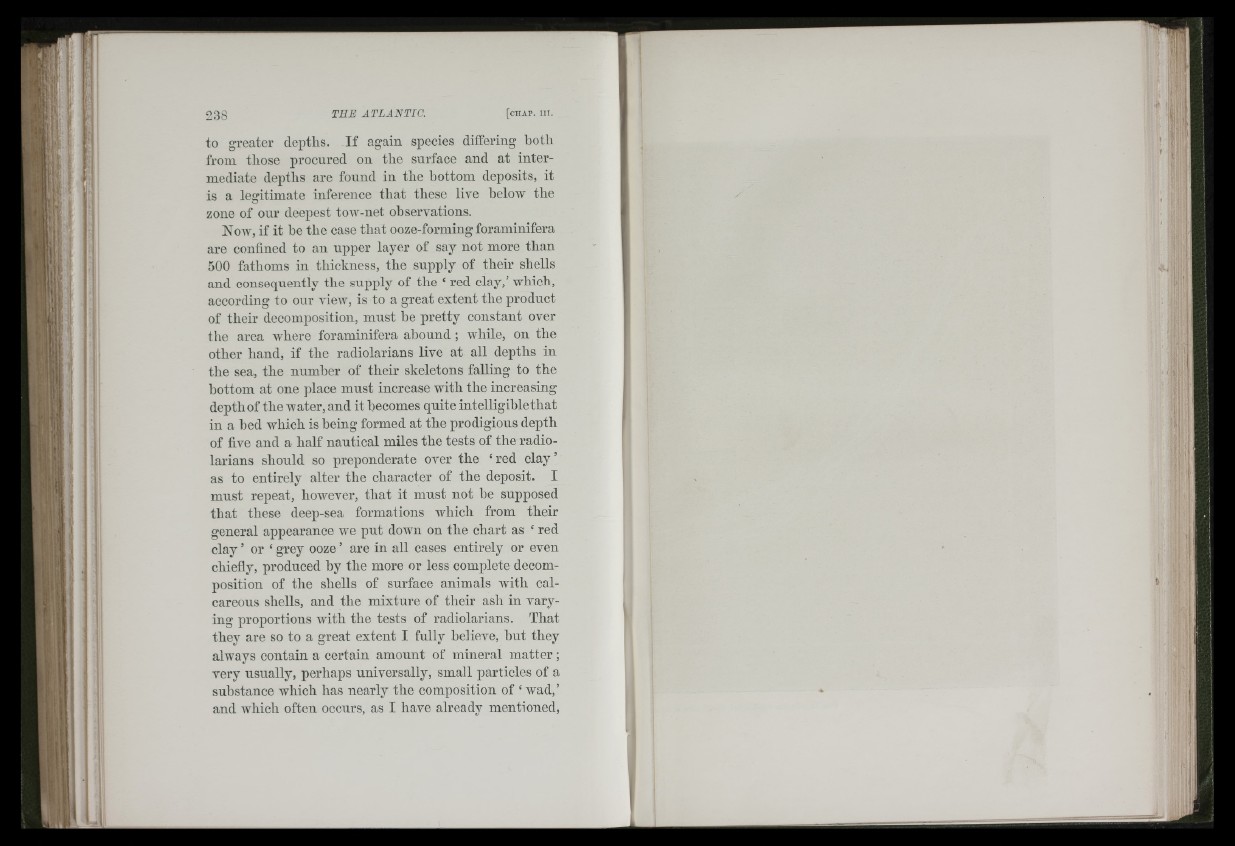
238
to greater depths. I f again speeies differing both
from those procured on the surface and at intermediate
depths are found in the hottom deposits, it
is a legitimate inference that these live below the
zone of onr deepest toAv-net observations.
Noav, if it he the case that ooze-forming foraminifera
are confined to an upper layer of say not more than
500 fathoms in thickness, the supply of their shells
and consequently the supply of the ‘ red clay,’ which,
according to our vicAV, is to a great extent the product
of their decomposition, must he pretty constant over
the area where foraminifera abound ; while, on the
other hand, if the radiolariaus live at all depths in
the sea, the number of their skeletons falling to the
hottom at one place must increase with the increasing
depth of the water, and it becomes quite intelligible that
in a bed which is heing formed at the prodigious depth
of five and a half nautical miles the tests of the radio-
larians should so preponderate over the ‘ red c la y ’
as to entirely alter the character of the deposit. I
must repeat, however, that it must not he supposed
that these deep-sea formations which from their
general appearance aa'c put doAvn on the chart as ‘ red
clay ’ or ‘ grey ooze ’ are in all cases entirely or even
chiefly, produced hy the more or less complete decomposition
of the shells of surface animals AA'ith calcareous
shells, and the mixture of their ash in varying
proportions with the tests of radiolariaus. That
they are so to a great extent I fully helieve, but they
always contain a certain amount of mineral matter ;
very usually, perhaps universally, small particles of a
substance which lias nearly the composition of ‘ wad,’
and which often occurs, as I have already mentioned,
A'*'